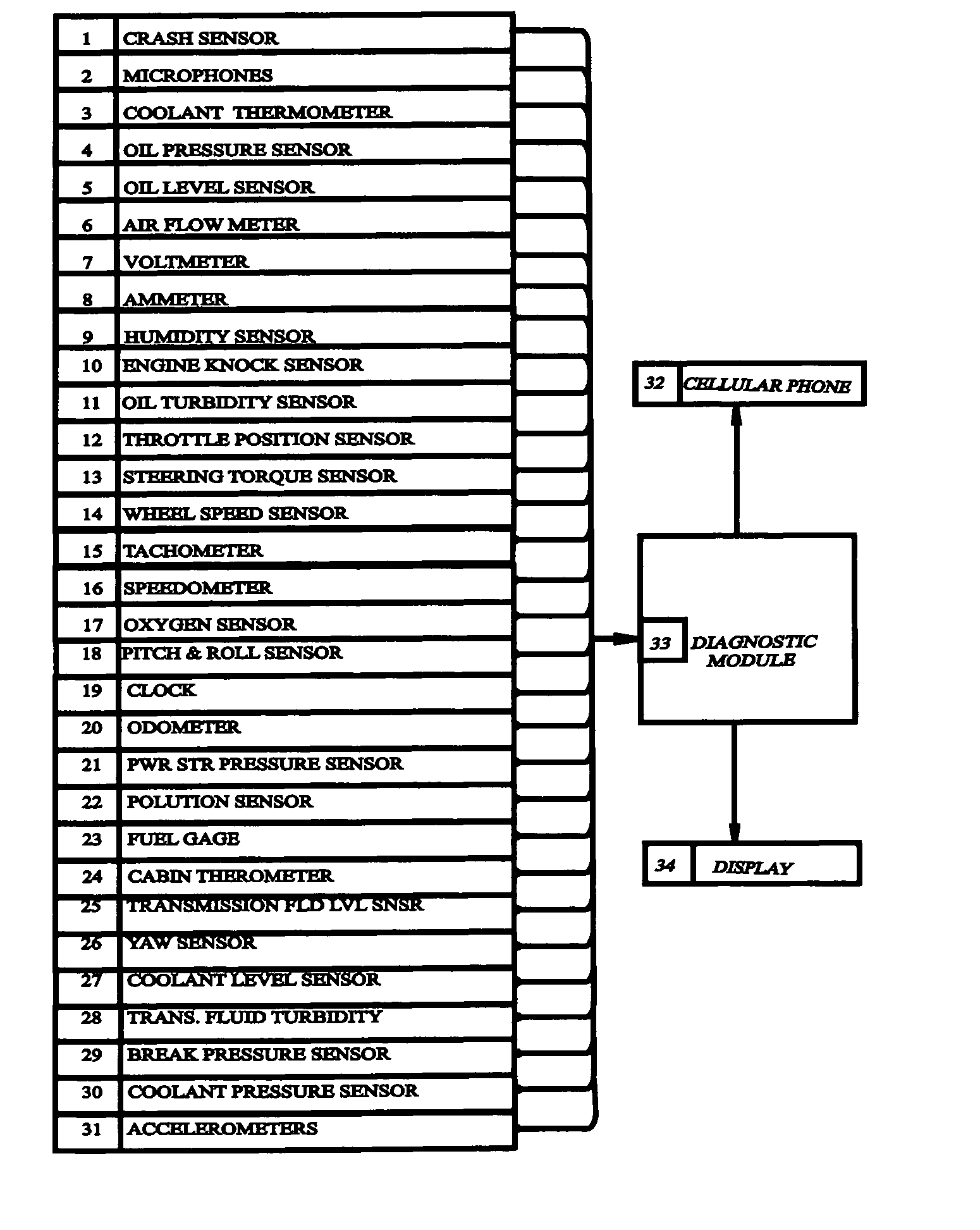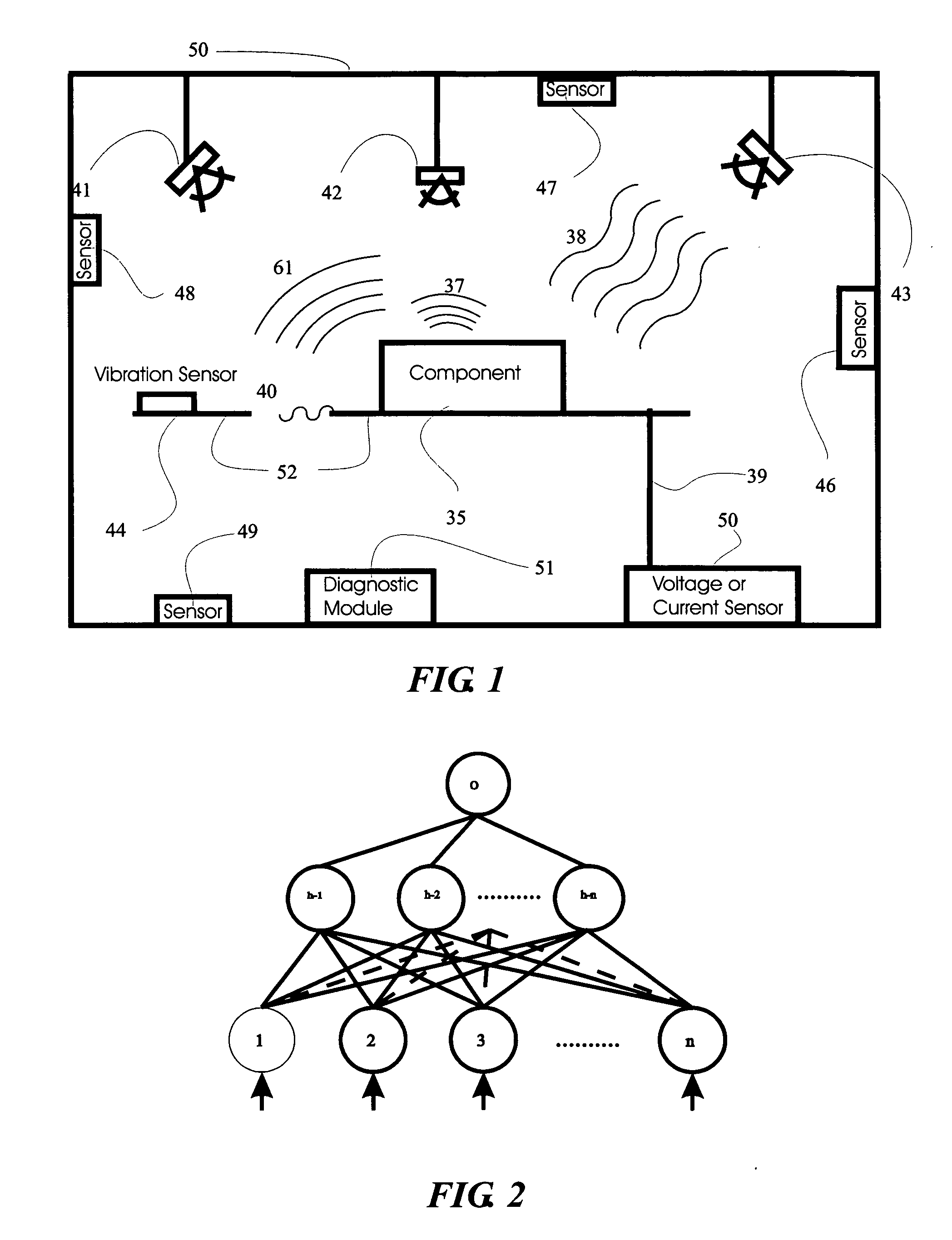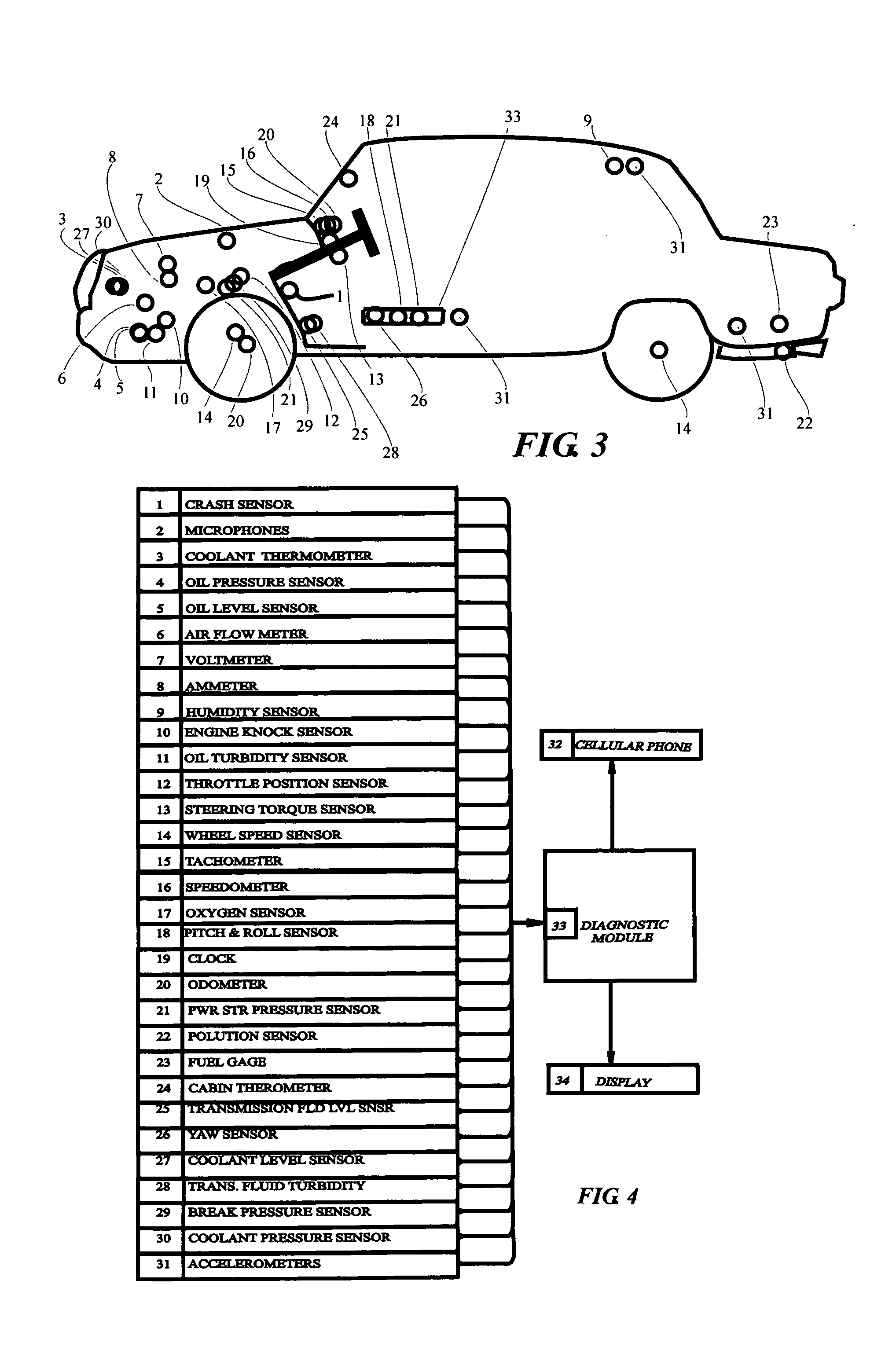System for obtaining vehicular information
a technology for obtaining vehicle information and information, applied in the direction of process and machine control, pedestrian/occupant safety arrangement, instruments, etc., can solve the problems of not being able to focus on small features of the display, being very distracting, and being able to add many more functions
- Summary
- Abstract
- Description
- Claims
- Application Information
AI Technical Summary
Benefits of technology
Problems solved by technology
Method used
Image
Examples
first embodiment
[0906] Referring now to FIGS. 20A-20B, a valve cap 149 including a tire pressure monitoring system in accordance with the invention is shown generally at 10 in FIG. 20A. A tire 140 has a protruding, substantially cylindrical valve stem 141 which is shown in a partial cutaway view in FIG. 20A. The valve stem 141 comprises a sleeve 142 and a tire valve assembly 144. The sleeve 142 of the valve stem 141 is threaded on both its inner surface and its outer surface. The tire valve assembly 144 is arranged in the sleeve 142 and includes threads on an outer surface which are mated with the threads on the inner surface of the sleeve 142. The valve assembly 144 comprises a valve seat 143 and a valve pin 145 arranged in an aperture in the valve seat 143. The valve assembly 144 is shown in the open condition in FIG. 20A whereby air flows through a passage between the valve seat 143 and the valve pin 145.
[0907] The valve cap 149 includes a substantially cylindrical body 148 and is attached to th...
second embodiment
[0909] a valve cap 10′ in accordance with the invention is shown in FIG. 20B and comprises a SAW strain sensing device 154 that is mounted onto a flexible membrane 152 attached to the body 148 of the valve cap 149 and in a position in which it is exposed to the air in the chamber 151. When the pressure changes in chamber 151, the deflection of the membrane 152 changes thereby changing the stress in the SAW device 154.
[0910] Strain sensor 154 is thus a differential pressure-measuring device. It functions based on the principle that changes in the flexure of the membrane 152 can be correlated to changes in pressure in the chamber 151 and thus, if an initial pressure and flexure are known, the change in pressure can be determined from the change in flexure.
[0911]FIGS. 20A and 20B therefore illustrate two different methods of using a SAW sensor in a valve cap for monitoring the pressure inside a tire. The precise manner in which the SAW sensors 150, 154 operate is discussed fully below...
PUM
 Login to View More
Login to View More Abstract
Description
Claims
Application Information
 Login to View More
Login to View More - R&D
- Intellectual Property
- Life Sciences
- Materials
- Tech Scout
- Unparalleled Data Quality
- Higher Quality Content
- 60% Fewer Hallucinations
Browse by: Latest US Patents, China's latest patents, Technical Efficacy Thesaurus, Application Domain, Technology Topic, Popular Technical Reports.
© 2025 PatSnap. All rights reserved.Legal|Privacy policy|Modern Slavery Act Transparency Statement|Sitemap|About US| Contact US: help@patsnap.com



